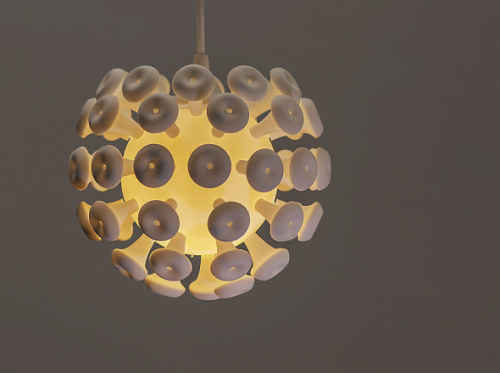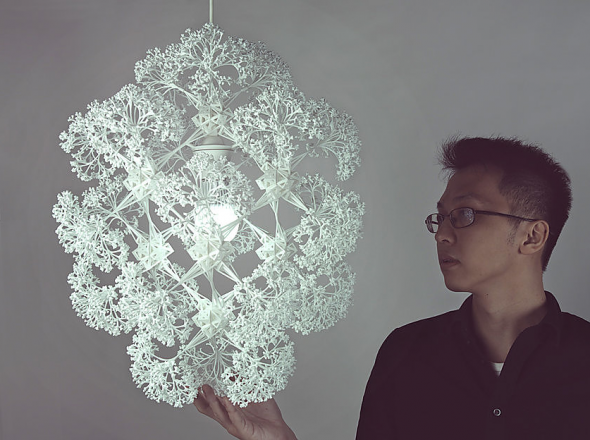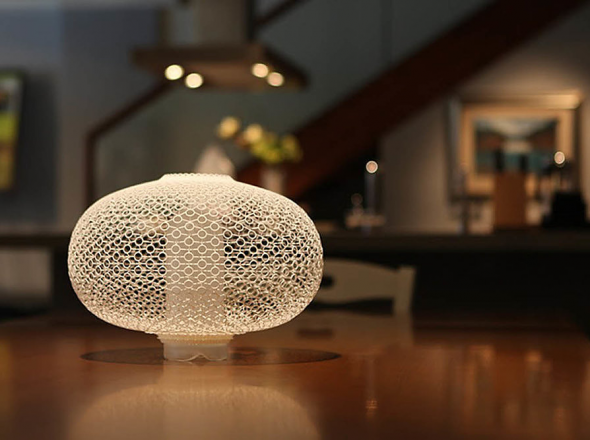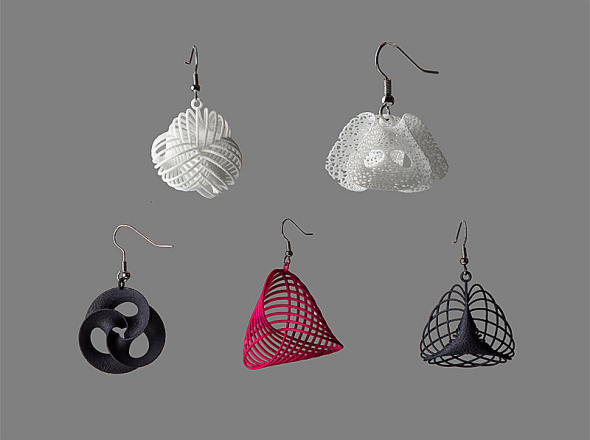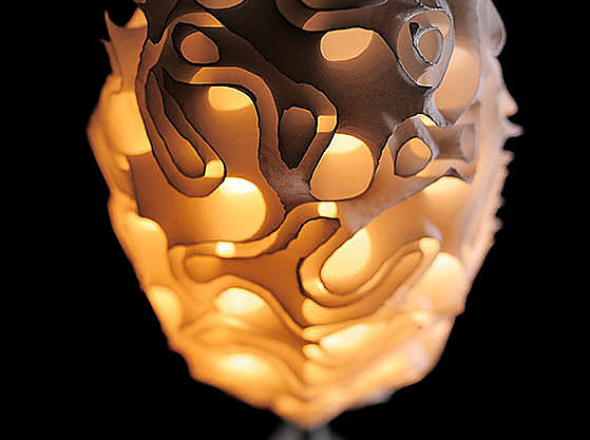Additive manufacturing opens up a numerous of possibilities in terms of design, surpassing traditional design restrictions.
3D Printing opens up possibilities and gives designers more freedom. 3D printing can incorporate a variety of design trends like biomimicry, mathematically influenced design, 4D and many other complex design.
4D Design
Using a 3D printer to create objects that change their shape when removed from the printer. Invented at MIT in 2013, the purpose is to make things self-assemble when exposed to air, water or heat due to the chemical interaction of the materials used in their manufacture.
“It’s Love” exhibits a technique in 3D printing known as 4D printing – where pieces can transform its properties &/or structure. It was printed to a height of around 16 cm and can extend to around 50cm. Its design has declaration of love in older Chinese font in its pattern.
Folding Polygon highlights a special 3D printing technique known as in “4D printing”. Inspired by origami’s simple folding idea, the Folding Polygon can transform its structure. It is produced at height of 18 cm and can double up in size up to 40 cm. In addition, the main body of the piece was all printing without any assembly required.
Biomimicry
Biomimicry is defined as design that draws influences from aspects of nature. An approach to innovation that seeks sustainable solutions to human challenges by emulating nature’s time-tested patterns and strategies. One example of this is our product collaboration with designer, Robin Sheng.
Robin Sheng’s Virus draws inspiration from the anatomy of one world’s smallest biological agents, as the name suggest, the virus.
Other Complex Design Ideas…
Opening an infinite amount of possibilities, 3D printing allows for complex designs unlike traditional manufacturing methods.
Grow a Forest is a project from DC for Life where we collaborated with architect, Wang Chun-Yang to create a piece playing with 3d Printing’s low volume production efficiency while testing the machine’s parameters. Grow a Forest consist of 48 ‘tree’ puzzle pieces where if combined at the right angles, form interlocking puzzle pieces to create a beautiful lighting décor. If combined properly, this piece does not need any additional adhesive to stay together.
Math Influenced
Mathematically inspired design are more plausible especially with the 3d modelling software’s ability to calculate designs from calculations & formulas. Geometry, algorithm design, and other math-influenced design can be seen in examples in our DC for Life products.
The design takes influence from the iconic look of the classical Chinese lantern and utilizes it for the exterior of a lamp or vase. Using the software, Grasshopper, we were able to produce a shape with derivative patterns. The simple, rich and varied pattern is adjustable through parameter settings according preferences, including circle size, thickness, density, distance, and depth. This parameter design paired with the RP manufacturing technology also us to achieving a futuristic new design.
The Mobius Strip, a surface with only one side and only one boundary, inspires this piece. Furthermore, different formulas of the piece were generated to create different interesting forms – complementing the contours and silhouettes of the female face well.
Through combining two continuous surfaces, the space is separated into three fluent void layers, which are contiguous and isolated from each other. When light illuminates from outside of the surfaces, it demonstrates various degrees of shadow on to the white skin, showing the depth of space. However, when the light illuminates from within, the boundary between surfaces have a blurring effect. The relationship between surface, space and layering creates a wonderful optical visual of separated exterior surfaces which also continues within itself.
With the help of the digital media program, Grasshopper, this work is the realization of the mathematical formula: cos(x) * sin(y) + cos(y) * sin (z) + cos (z) * sin(x)-(cos(x) * sin(y) + cos(y) * sin (z) + cos(z) * sin(x))^2. All the complicated cavities create three void layers which reflect light from diverse angles, simulating a paradoxical relationship, like oil and water. This is also a demonstration of another “paradoxical” relationship, a combination of art and mathematics joined together in a perfect unison.


